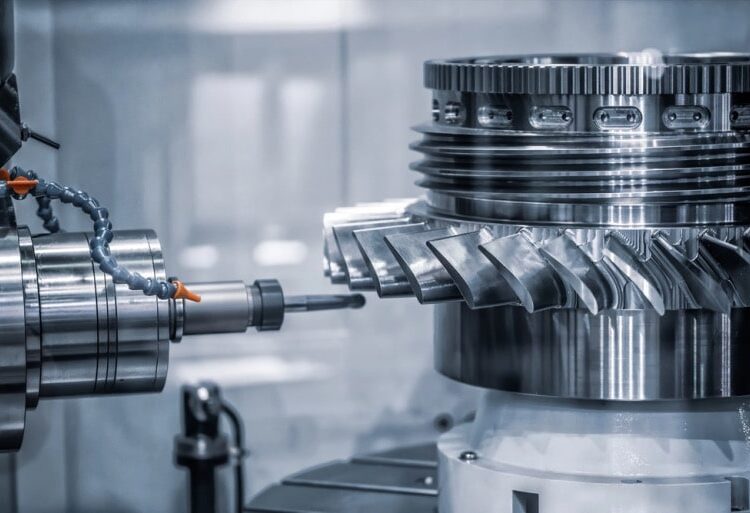Workpiece Positioning and Fixture Selection
The positioning of the workpiece is crucial to the accuracy and efficiency of the entire metal machining process. Accurate positioning directly affects the relative position between the tool and the workpiece, thus determining the machining quality. To ensure the precision of metal parts, positioning must meet the criteria of uniqueness and repeatability.
Uniqueness means that the workpiece’s position on the fixture must be uniquely determined so that each machining operation follows the predetermined path. Repeatability ensures that the workpiece can be mounted in the same position on the fixture every time it is installed.
Fixture selection is also a complex and important aspect. A good fixture not only ensures the stability of the workpiece but also enhances metal machining efficiency and reduces errors. Fixture selection needs to consider multiple factors, such as the shape, size, material of the workpiece, and the forces required for machining.
For instance, thin-walled or easily deformable metal parts require fixtures that can provide uniform support. For large or heavy workpieces, the fixture must offer sufficient rigidity and stability. The workpiece material is another critical factor in fixture selection. Soft or fragile materials need soft fixtures or those made from special materials to prevent damage.
Additionally, forces, heat, and vibrations generated during machining must be considered. Fixture design must ensure the workpiece’s stability throughout the metal machining process while also considering the ease of clamping and unloading.
Tool Selection and Parameter Setting
In CNC metal machining, selecting the appropriate tools and correctly setting their parameters significantly impact the machining outcome and efficiency. Different types of tools are suited to various machining requirements, as shown in Table 1, which lists some common tool types and their applications. The geometric parameters of the tools also greatly influence the machining results, as detailed in Table 2.
Table 1: Tool Types and Their Applications
| Tool Type | Application |
| End Mill | Flat surfaces and grooves machining |
| Ball End Mill | Curved surfaces machining |
| Drill | Hole drilling |
| Thread Mill | Thread machining |
Table 2: Relationship Between Tool Geometric Parameters and Machining Effects
| Geometric Parameter | Description | Machining Effect |
| Tool Tip Angle | Angle at which the tool tip contacts the workpiece | Affects cutting rigidity and surface roughness |
| Helix Angle | Angle of the tool’s teeth helix | Influences chip evacuation and cutting entry |
| Number of Teeth | Number of teeth on the tool | Affects cutting stability and surface finish |
Determination of the Process Route
Process route determination is a critical step in CNC metal machining. It is related to how to effectively and economically complete the machining of metal parts.
In metal machining, the process route describes the entire machining process from raw material to finished product, including the sequence of various machining operations, the equipment and tools used, and the related machining parameters. The correct process route ensures that the part is machined to a high quality while reducing production costs and lead times.
Several factors need to be considered when determining the process route. Metal parts with complex shapes require multiple machining methods and multiple setups. For example, a metal part with a complex curved surface needs to be rough machined first and then finish machined. Different materials require different tools and machining parameters.
For example, carbide and stainless steel require completely different machining methods and machining parameters than aluminum alloys. Workpieces with high precision and high surface quality requirements require the use of more sophisticated tools and equipment, as well as more stringent machining parameters.
The machining equipment chosen needs to be capable of performing the specified operations. The availability of the equipment should also be considered to avoid production interruptions. In addition, try to select cost-effective machining methods and equipment to reduce production costs.
This involves weighing factors such as machining time, tool life and material loss. This leads to a detailed machining plan, including equipment setup, tool selection and machining parameter settings, which provides the basis for subsequent code programming and simulation.
Post-Processing and Inspection
Post-processing and inspection are critical steps in the metal machining workflow, ensuring that machined parts meet the required specifications and quality standards. After removing the workpiece from the CNC machine, it typically undergoes post-processing.
Post-processing includes deburring, surface treatment, heat treatment, and other operations aimed at improving the appearance, functionality, or physical properties of the parts. Machining often leaves sharp edges or small protrusions on the workpiece, known as burrs. Burrs not only affect the appearance but also the functionality of the parts.
Deburring can be done manually or mechanically, using methods such as sanding, grinding, or electrochemical processes. Surface treatment is carried out to enhance the appearance, corrosion resistance, or hardness of the parts. Common surface treatment methods include painting, anodizing, and plating.
Conclusion
In conclusion, thorough preparation is fundamental to the success of CNC metal machining processes. This involves careful consideration of workpiece positioning and fixture selection, choosing the right tools and setting appropriate parameters, determining an efficient process route, and conducting meticulous post-processing and inspection.
By focusing on these critical preparatory steps, manufacturers can ensure high precision, efficiency, and quality in their CNC machining operations, ultimately enhancing overall productivity and product standards in the metalworking industry.




